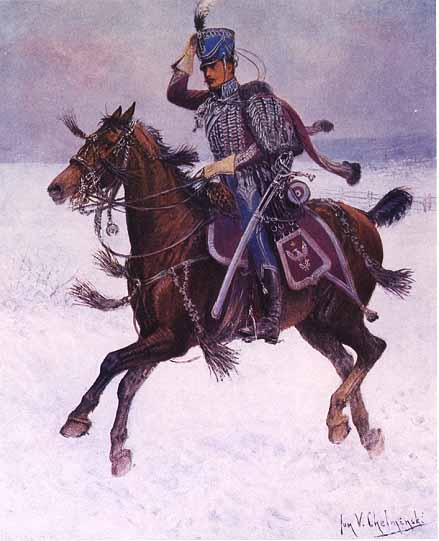Bond is meeting Mathis, his MI6 contact, over lunch at the Hermitage. Mathis will introduce him to Mlle. Vesper Lynd, the woman who will help him in the operation to bankrupt Le Chiffre.
At this first meeting, the beautiful Lynd wears a grey silk dress with a square neck, tight bodice, and slightly full skirt; her waist is encircled by a black, 3-inch-wide, hand-stitched belt. (The dress is by Dior, as it turns out.) Her shoes are a matching black and her hat, a large "cart-wheel" of gold straw, has a black ribbon. Around her neck, a gold flat-link chain lights up her sun-tanned skin; on her finger, a "broad" topaz ring picks up the gold of the necklace and the straw hat.
Her purse is a black, hand-stitched sabretache, a military pouch once carried by Magyar horsemen of the tenth century; we have examples of these pouches as grave goods. Then called a tarsoly, the pouch was suspended from the belt with the saber and so hung under the saber and to the rider's left side. It was often embellished with a coat of arms or monogram on the front flap.
Hussar cavalry soldiers adopted the tarsoly, in part because their uniforms were so tight that there was no room for pockets, but changed the name: German sabel for saber plus tasche for pocket became sabretache.
British cavalry in the Crimean War (1853-1856) still carried sabretaches. According to the Wikipedia entry, "'undress' versions in plain black patent leather were used on active duty."
So to complete the picture of Miss Lynd, this is how I see her sabretache: it is plain, but shiny, black patent leather like those British cavalrymen used in the Crimea.
Hussar cavalry soldiers adopted the tarsoly, in part because their uniforms were so tight that there was no room for pockets, but changed the name: German sabel for saber plus tasche for pocket became sabretache.
British cavalry in the Crimean War (1853-1856) still carried sabretaches. According to the Wikipedia entry, "'undress' versions in plain black patent leather were used on active duty."
So to complete the picture of Miss Lynd, this is how I see her sabretache: it is plain, but shiny, black patent leather like those British cavalrymen used in the Crimea.
 |
| A Hussar officer in full dress, army of the Duchy of Warsaw in 1807. His sabretache is emblazoned with the White Eagle of Poland. Painting by Jan Chełmiński, 1913. |

